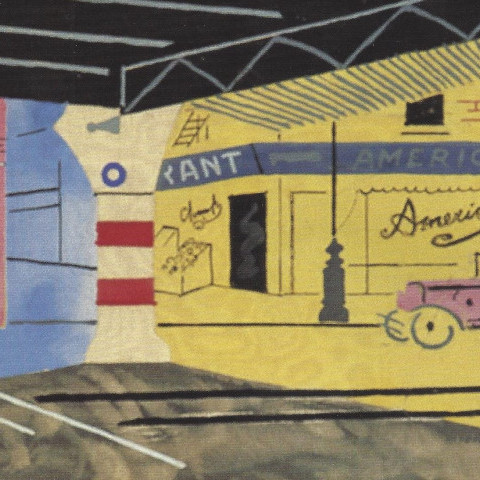Born in Philadelphia in 1892, Stuart Davis is known by many art historians as the American painter most influenced by Cubism. Art historian Norman Geske described Davis' career as a "near classical demonstration of the process by which American painting of the twentieth century came of age." Davis moved from journalistic illustration to Social Realism, to Expressionism, to Cubism, ultimately becoming one of America's leading abstractionists. Strongly influenced by Fernand Leger and the New York Armory Show of 1912, he developed his own unique style of Cubism, which also incorporated Realism.
Along with Max Weber, he is credited with being the importer of Cubism to the United States from France at a time when the public was more interested in Social Realism and American Scene painting with people and places that were recognizable.
Through his painting, he pursued a life-long quest of finding a logical set of assumptions from which he could produce a modern picture, and the results were strong, related patterns and compelling color combinations. In addition to paintings, his body of work includes drawings, collages, lithographs, gouaches, and murals.
Stuart Davis was born in Philadelphia to artistic parents. His mother was sculptor Helen Stuart Foulke, and his father, Edward Wyatt Davis, was art editor of the Philadelphia Press. Through his father, he had early association with John Sloan and Robert Henri, with whom he studied in New York City from 1910 to 1913. The Armory Show of 1912 dissuaded him from following the realist styles of Sloan and Henri, but he maintained his artistic focus on aspects of the social realism they espoused in that many of his subjects were places such as run-down hotels or apartment interiors.
Davis experimented with Cubism, collage, and total abstraction, and eventually settled on a style based on Cubism with much improvisation. In the late 1920s, he lived in Paris in Jan Matulka's studio close to other modernists including Alexander Calder, Isamu Noguchi, and Morris Kantor. Then he returned to New York City, in whose vicinity he spent the remainder of his career. He had a New York City studio and also a studio in Hoboken, New Jersey. From that time, his paintings reflected American experience, especially his love of jazz music, with the modernist styles he employed beginning with the Armory Show of 1913.
In the 1930s, he taught at the Art Students League in New York, and he also did murals for the WPA (Works Progress Administration). In the 1940s, he taught at the New School for Social Research. In 1964, he received the first commission by an American artist to design a postage stamp, which was issued six months after his death in that year.
His first exhibition was in 1927 and venues included the Phillips Gallery in Washington DC , and the Whitney Museum in New York. In this exhibition, he introduced his landmark "Eggbeater Series", various depictions of an eggbeater, a fan and a glove, with each one increasingly abstract until only pure abstraction remained.
A 1998 retrospective of his work was organized by curators of the Peggy Guggenheim Collection in Venice, and its last venue was The National Museum of American Art in Washington D.C.
Source: askart.com

